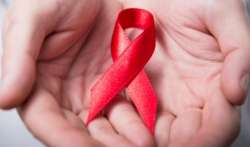In Manipur, HIV transmission shifts from syringe to sexual route
A 2016-17 survey by the Manipur AIDS Control Societysaid the virus is now transmitted through sexual relationship in 78 per cent of HIV/AIDS transmission cases in the state.

The transmission mode of a vast majority of HIV/AIDS cases in Manipur has shifted from sharing of syringes for injecting drugs in the '90s to sexual contacts during the last decade.
A 2016-17 survey by the Manipur AIDS Control Societysaid the virus is now transmitted through sexual relationship in 78 per cent of HIV/AIDS transmission cases in the state.
While 15 per cent are due to sharing of syringes, the remaining 7 per cent are attributed to parent-to-child transmission, the survey said.
"Penetration of HIV/AIDS into the general populace has changed to sexual route over the last 10 years unlike earlier when the virus used to spread through sharing of syringes among injecting drug users," MACS project director Valentina Arambam said.
The state has 24,457 HIV/AIDS affected individuals till August 2017.
Arambam attributed the increase of HIV/AIDS cases through sexual route to social stigma and fear of rejection by affected children born to AIDS-infected parents.
HIV/AIDS in Manipur peaked during the late '90s and the early years of this century and a number of children born at that time are now adults and sexually active. Such men or women do not reveal to their partners that they are HIV affected due to fear of rejection and the virus spreads, Arambam said.
Transmission of the disease through sharing of syringe is declining now because of intense campaign, she said adding that efforts are on to contain HIV/AIDS in the state.
"Manipur which once topped all the eight North Eastern states (including Sikkim) in terms of the number of HIV/AIDS affected patients is now occupying the fifth position," Arambam said.
Three most affected districts are Chandel, Ukhrul and Senapati and the National AIDS Control Organisation intends to launch an epidemiological investigation in those places.